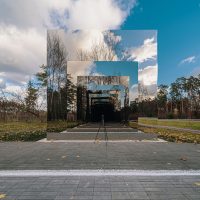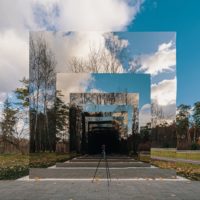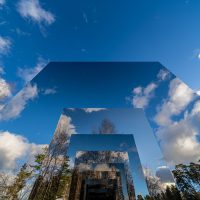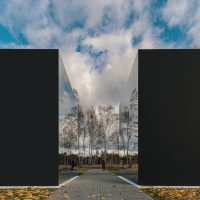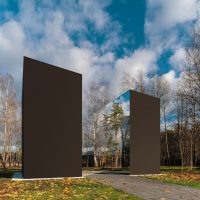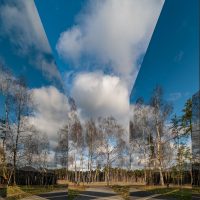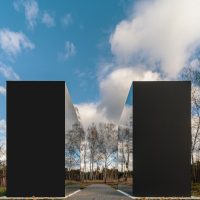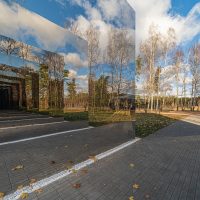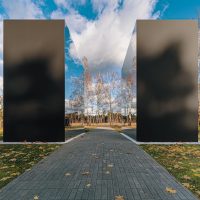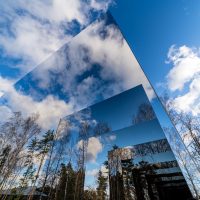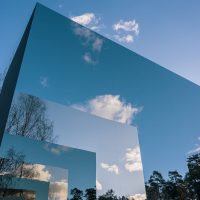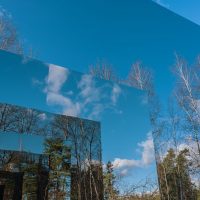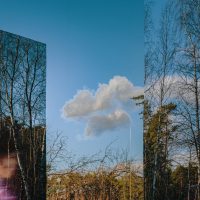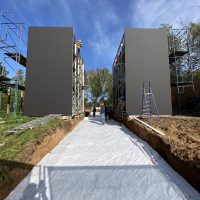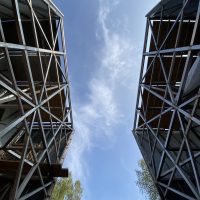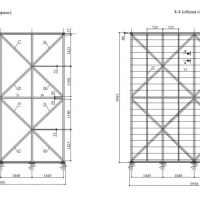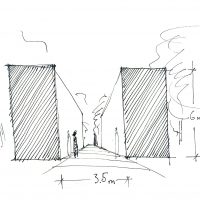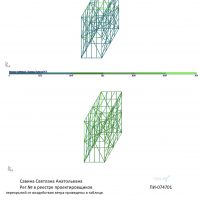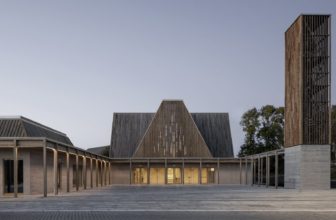Malevich Installation
Artist Gregory Orekhov reinterprets the “Black Square” in a new sculpture for Malevich Park located in the Moscow region. Located in the Moscow region, near the settlements of Barvikha and Nemchninovka, a park named after Kazimir Malevich has opened its doors to the public. These countryside landscapes were not only the artist’s favourite vacation spots but also served as inspiration for his later acquired figurative style, which marked the beginning of a new chapter in his art. One of the key elements of the park is a sculpture created by Gregory Orekhov.
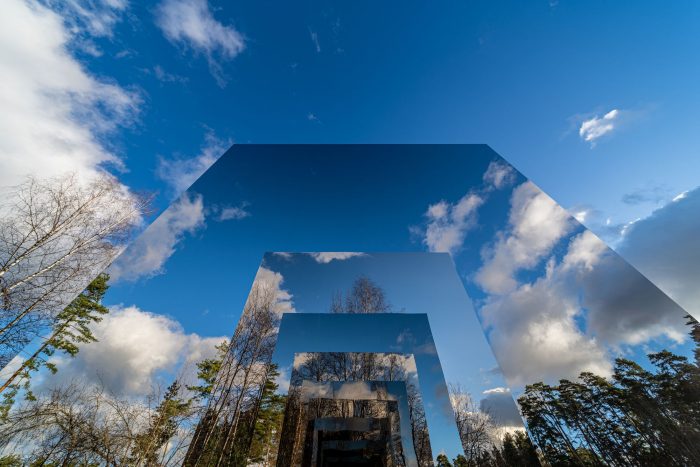
Photography by © Ivan Muraenko
Orekhov’s “Black Square” is the first large-scale monument created in memory of Kazimir Malevich, and a unique example of a contemporary Russian sculpture. Orekhov considered the sculpture’s captured volume and intentionally preserved its “unnaturalness” against the backdrop of the park, which is the most important characteristic of the object. Orekhov masterfully integrates the work of art within the built environment, all the while connecting the viewer to the architectural space of the landscape.
Divided into two parts, Orekhov’s “Black Square” acts as a passageway into the park. The object itself is quite utilitarian in its nature. According to the artist’s idea, once we enter the “square”, we find ourselves at a crossroad — to either enter the park or enter infinity, a crossing between what occurs in real-life and hundreds of its unfulfilled variations.

Photography by © Ivan Muraenko
Orekhov was able to achieve this by placing two full-length mirrors made of polished stainless steel into the two halves of the cube. The steel sheets made in the artist’s studio have no analogs in Russia, while the surface polishing was achieved with the highest level of processing. Nevertheless, the technique is applied against itself, against the course of historical time, against progress, as a means of overcoming history and returning to the beginning of nature.
The idea behind the creation of this work derives from and continues the philosophy of the most notable cultural figures of the Avant-garde era of the early 20th century. The invasion of industrial production into the traditional way of living was perceived as the destruction of unity within nature, upon which the millennial cultural tradition was based upon.
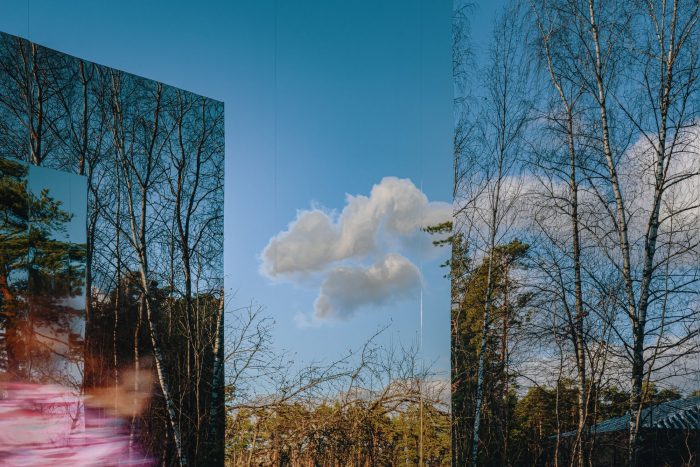
Photography by © Ivan Muraenko
The emulation of nature has long lost its’ value, as the world has gradually grown unstable. At the same time, the advancement in technique, not only deprived art of its claim to truth, but changed the way artists defined their creativity — not as a reflection of the world, but as its real transformation. The representation of sculpture and painting has since been regarded as something “real” — not as duplicates of real things existent in an idealistic space.
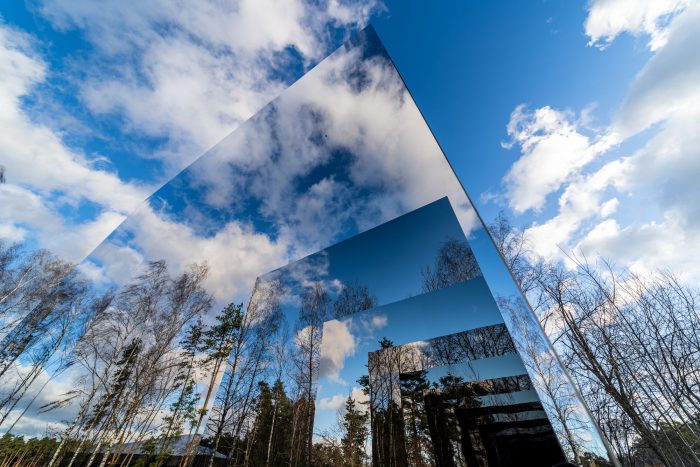
Photography by © Ivan Muraenko
“The viewer turns into an accomplice, falling into an endless corridor of reflections. The dynamics of the viewer’s movement become intriguing inside the static figure. The spatial development of the “Black Square” lies within the structure: the transition from Malevich’s two-dimensional form to the three-dimensional form of Orekhov.
Yet, a different universe emerges inside the sculpture — a multidimensional space that resembles a “laughing room” or the sci-fi/horror “Cube,” writes curator and art critic Mikhail Sidlin. “Gregory Orekhov is perhaps the only Russian sculptor that works in true postminimalism. spirit: he combines a crude form with a theatre of emotions that ultimately draw one in.”
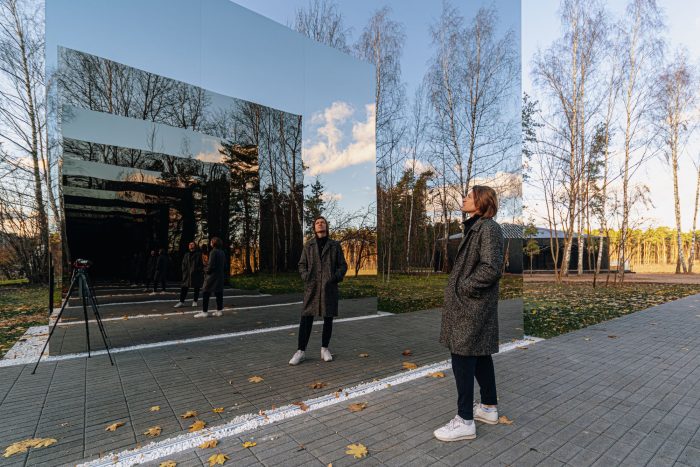
Photography by © Ivan Muraenko
Project Info:
Architects: Orekhov
Location: Moscow Oblast, Russia
Area: 200 m²
Project Year: 2020
Photographs: Ivan Muraenko
Manufactures: Alligator
- Photography by © Ivan Muraenko
- Photography by © Ivan Muraenko
- Photography by © Ivan Muraenko
- Photography by © Ivan Muraenko
- Photography by © Ivan Muraenko
- Photography by © Ivan Muraenko
- Photography by © Ivan Muraenko
- Photography by © Ivan Muraenko
- Photography by © Ivan Muraenko
- Photography by © Ivan Muraenko
- Photography by © Ivan Muraenko
- Photography by © Ivan Muraenko
- Photography by © Ivan Muraenko
- Photography by © Ivan Muraenko
- Photography by © Ivan Muraenko
- Photography by © Ivan Muraenko
- Photography by © Ivan Muraenko
- Photography by © Ivan Muraenko
- Photography by © Ivan Muraenko
- Photography by © Ivan Muraenko
- Engineering Plan
- Sketch
- Diagram


